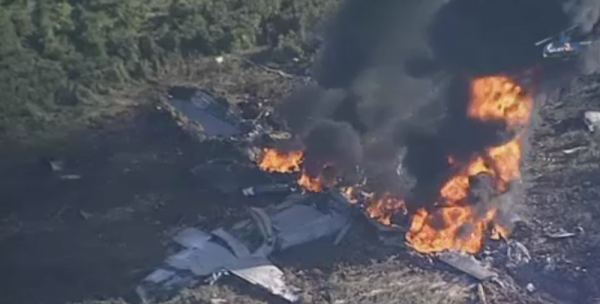Investigation Excoriates Air Force, Navy For 2017 Marine Corps KC-130 Crash That Killed 16
Last year’s deadly crash of a Marine Corps KC-130T that killed 16 service members – including seven members of the...

Last year’s deadly crash of a Marine Corps KC-130T that killed 16 service members – including seven members of the Marine 2nd Raider Battalion – was the result of a series of oversights and other failures dating back to 2011, when one of the aircraft’s propellers was not fixed for corrosion, Military Times has reported.
- Fifteen Marines and one sailor were killed on July 10, 2017, when that propeller came loose and struck the aircraft, leading to a series of mid-air catastrophes that caused the KC-130T to disintegrate over Mississippi, according to Military Times, which obtained a copy of the 2,000-page crash investigation and supplementary records.
- “Neither the aircrew nor anybody aboard the KC-130T could have prevented or altered the ultimate outcome after such a failure,” according to a redacted copy of the investigation, which was released on Thursday.
- It was the deadliest Marine Corps crash since 2005, when a CH-53E Super Stallion helicopter crashed in Iraq, killing 30 Marines and one sailor
- The investigation found plenty of blame to go around for the July 2017 crash, starting with the civilian artisans at Warner Robins Air Logistics Complex in Georgia, who failed to do the proper maintenance on the aircraft in 2011; the Navy, which did not properly make sure the work was done properly, Military Times reported; and Marine Aerial Refueler Transport Squadron 452 for not properly checking the KC-103T’s propellers for cracks, Military Times reported.
- The Air Force suspended blade maintenance operations at the Warner Robbins depot on Sept. 2, 2017, in response to the investigation, which found propellers for other Marine Corps, Navy, and Air Force C-130 variants had also not been fixed.
- “Twelve of sixteen blades on the MAC were determined to have corrosion that existed at the time of their last overhaul at WR-ALC [Warner Robins Air Logistics Complex], proving that over the course of the number of years referred to above, that WR-ALC failed to detect, remove and repair corrosion infected blades they purported to have overhauled,” the investigation found.
- The Navy should have detected these problems because it was supposed to do quality checks at the depot per an agreement with the Air Force, but the investigation found no evidence that the Navy ever performed any of its required audits of the depot’s work, according to Military Times. Both services are working to fix the problems at Warner Robins that the investigation cited, but the Navy has not yet established a process to make sure that propellers are fixed properly.
- “Had the QA provisions of the DMISA [Depot Maintenance Inter-service Support Agreement] been properly managed and implemented by the Navy via conducting systematic and routine quality audits, numerous deficiencies within the blade overhaul process should have been identified which could have prevented the accident,” the investigation says.
- The 4th Marine Aircraft Wing is addressing the deficiencies found by investigations and it expects to stop flying KC-130Ts within the next two years, wing commander Marine Brig. Gen. Bradley James told Military Times.
SEE ALSO: The Military’s Aviation Crisis Is Definitely ‘Not A Crisis,’ Pentagon Insists
WATCH NEXT:

